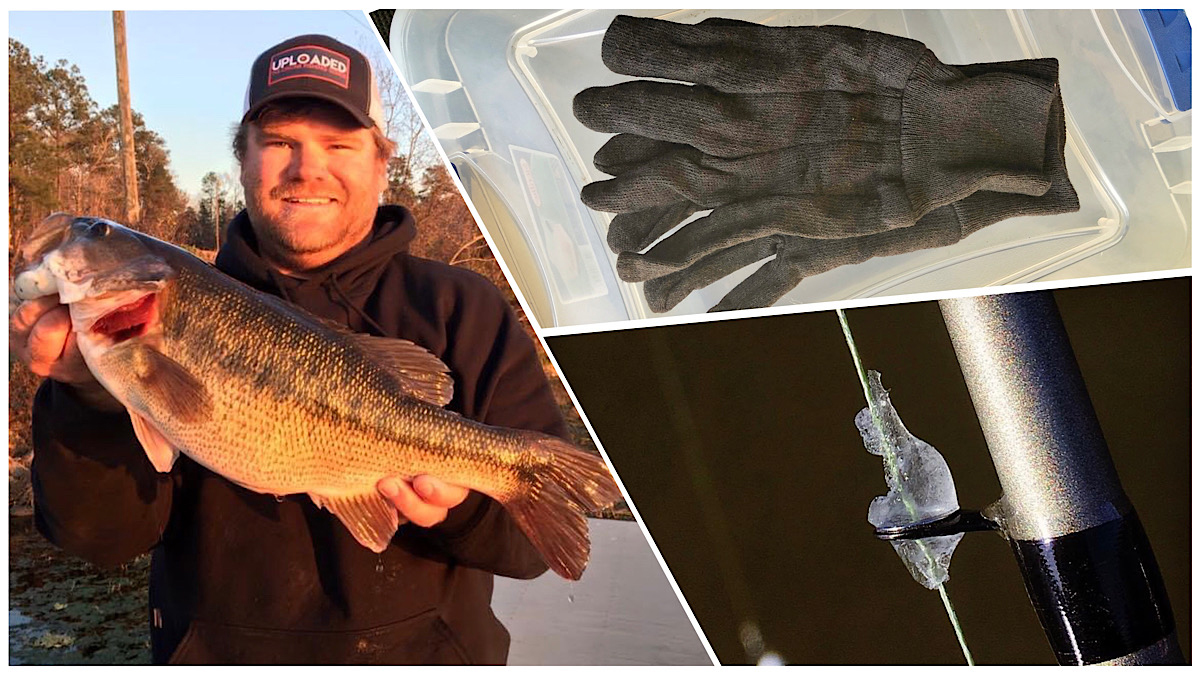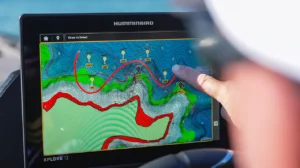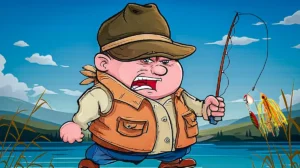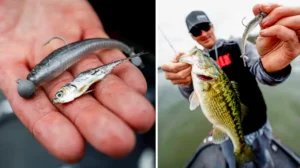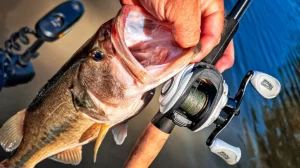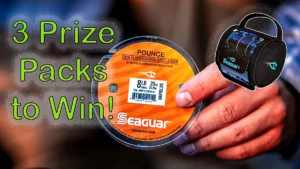As I get a little older, I find the idea of leaving my warm house in the dead of winter to go chase a bass in the bitter cold less and less appealing. But I know from experience, it’s on those nasty days that we stand the best chance of catching a really big one. I was remembering some of those days gone by recently and thought they might be able to fan the flame for those of you on the verge of deciding to go brave the cold. So I want to share a few of them with you today, as well as some tips to make the trip more bearable and productive.

Story time
It was a little over a decade ago. I was on Lake Guntersville fishing a college event for Auburn University with my then-tournament partner Jordan Lee. It was brutally cold and snowed literally from the time we backed the boat in until we took the boat out. But I was amped up because I was in the boat with Jordan, who, despite having not yet won two Bassmaster Classics and everything else, was already a very decorated local angler on Lake Guntersville and had the clear makings of a true hammer. And when we saw the snow he told me, these are the days you have the best chance to catch a big one.
Snow, on Lake Guntersville in particular, is apparently the ultimate cheat code for unlocking the big bite. And that makes sense, since we all know cold fronts with intense weather also activate fish in the spring and summer as well. It’s those overcast days with a chance of precipitation when the bass bite the best. So the same holds true with frozen precipitation. And I got to see that play out for myself on Lake Guntersville that day. Sometime midday, Jordan got a call from his brother Matt. Matt had broken down upriver and needed a tow.
We set off in search of him but the snow was so thick we could barely see. Running off the graph is all well and good, but floating debris and other boats aren’t on the graph, so it took us quite a while longer than it should have to get there. Matt told us he had one pretty good one, a solid keeper and a keeper. When we got there, we obviously wanted to see the “pretty good one”.
He held up one close to 4 pounds and I thought to myself, “Yeah, that’s a pretty good one for somewhere else, but not for here really.”
He responded, “No, that’s the solid keeper.”
He proceeded to pull out a 10-pound behemoth. The biggest bass I had seen in person at that point in my life. I thought to myself, maybe there’s something to this snow deal.
Story No. 2
Flash-forward a few years and I’m fishing an EverStart (now Toyota Series) on Lake Guntersville again. After a strong day one, 26 pounds had me towards the bottom of the top 10, which still blows my mind. Day two was a good bit tougher with only 17 pounds and I fell to 15th, missing the final day cut by five spots.
I was pretty disappointed to miss the cut because I knew I was on some good fish based on what transpired on day 1, as well as the couple of good fish I had on day 2 and the two 6-pounders my co-angler caught the second day. So I was already itching to get back out there and then I looked at the forecast.
It was calling for snow.
I woke up early the next morning and sat around awhile. I never like to go back out on a fishery while the tournament is still going on. I figure if I should be out there, then I would have made the cut and I don’t want to hurt anyone’s chances of winning who might be in the top 10. But the more I sat there and thought about it that day, the more it ate me up inside. I hadn’t seen anyone in the top 10 fishing the same stuff I had been fishing in the tournament, so around lunch I had had all I could take and went back out there.
What happened was one of the best days of fishing I have ever had.
Now, I’m not trying to say I’d have won or kicking rocks at what might have been, because by the time I got out there and the fish really started biting, the tournament day was coming to an end and who knows if those same fish would have bit in the morning the way they were in the evening; they likely would not have because the front pushed through that evening. But as I fished my way towards dark and the snow began to fall, I caught a dozen or so around 4 pounds, a few pushing 5, a 6 and one sure-enough good one over 8 pounds; I would have had around 28 pounds with my best 5. Which doesn’t sound that much better than my day-one weight of 26 pounds. But considering I only had 5 bites in 8 hours on day one, that last 5 hours of my trip to Guntersville far surpassed day one in numbers of quality fish. I believe the snow had a lot to do with it.
One final illustration and some cold-water tips
Another of my best days on the water came just a few years ago on Lake Jordan here in Alabama. Though it didn’t snow that day, it was bitter cold and the conditions were pretty nasty. I went out and braved the bitterness, with my reward on the backside being over 22.80 pounds of spotted bass.
That was, and still is, the biggest five-fish limit of spots I’ve ever caught and that bag included my biggest spot to date, one weighing 5.43 pounds. Similarly to Lake Guntersville on that last day, the big bites were abundant. I could have probably had another five-fish limit close to 20 and another still over 18 pounds. There were so many spots over 3 1/2 pounds biting that day it was unreal.
I had most of what I weighed by about 8 o’clock that morning. Though the conditions were pretty brutal on my body, the biggest hindrance to the fishing came in the form of my rod guides freezing up; about every five minutes, I’d have to pick, pop and poke ice out of my frozen guides to free my line up again. It helped a little to dunk the top half of my rod in the water between casts. This slowed the freezing down a little and kept those last few guides that are the smallest from freezing up so fast. But still, it was a battle for the first few hours just to keep my bait in the water. I have since learned that line conditioner or even cooking spray like PAM can help to prevent or at least slow this down.
Another hack I’ve found to make those bitter cold days more bearable is to buy a pack of cheap polyester/cotton work gloves—the ones you can get at a gas station in a five-pack for a few bucks. These are especially helpful on days with snow, sleet or rain. I can still feel my rod well through these gloves but they keep my skin from making direct contact with the rod grip. As a pair starts to get pretty wet, I just peel them off, toss them in the rod locker and slip on another pair. I may go through five pair in a day and then when I get home I’ll just lay them all out to dry and reuse them on the next trip. But I will add, these gloves aren’t for running from spot to spot, you’ll want some beefier gloves while you’re driving the boat.
One last cold-weather tip I learned from my dad. He has diabetes, so his hands and feet can get miserably cold. But he also has a good set of eyes and saw the 22 pounds of spots I caught that day and had to get in on the action. We went back to fish a tournament shortly thereafter and pops brought a can of Sterno heat and put it in a bucket so that he could warm his hands intermittently throughout the cold morning, which I thought was a pretty cool idea. HotHands hand warmers also come in clutch when it’s super cold.
Above all else, however, remember to be extra safe if you choose to go fishing this time of year. If you’re in a boat, wear a life jacket… the whole time. It’s also a good idea to take an extra set of clothes and something to start a fire with in the event you fall in the water.
Suggested baits to use
To wrap things up, let’s talk about some of the baits you’ll want to use when fishing in these brutal conditions. I’d say the best winter big bass bait is likely a jig. Of all those fish catches I mentioned in this piece, 90 percent came on a football or ball-head jig. A Ned rig is awesome in the winter, but a Ned rig isn’t always necessary in the winter. On those nasty days, it’s a good idea to level up to something the fish can see a little better.
If you push shallow, a spinnerbait is awful hard to beat. I have caught more big bass on a spinnerbait shallow than any other bait when the water is between 40 and 55 degrees. A couple other baits get pretty close productivity-wise in that temperature range when it’s sunny, such as a squarebill crankbait for instance. But when it’s cold and nasty, double Colorado and big willow leaf spinnerbaits are the go-to baits for me to talk a big one into biting.
It’s the same principal we see play out in the summer months and throughout the year. Then, you may only be able to get bit on a shaky head or Texas rig on those tough days. But when the clouds show up, the sky darkens and it begins to rain, get the buzzbait and other topwaters out.
Don’t let cabin fever get you down. Hopefully these stories fire you up a little to get back out there a time or two this winter (if your water isn’t frozen over completely). If you do brave the cold, be prepared and be safe. Look for big bites on power-fishing baits and invest a little time into the grind no matter what. Even if you don’t catch a bunch of big ones, that effort you’re putting in now will make those good spring days on the water that much sweeter when they come.
But I feel pretty confident there’s a big one out there waiting on you to collide with it before then.




